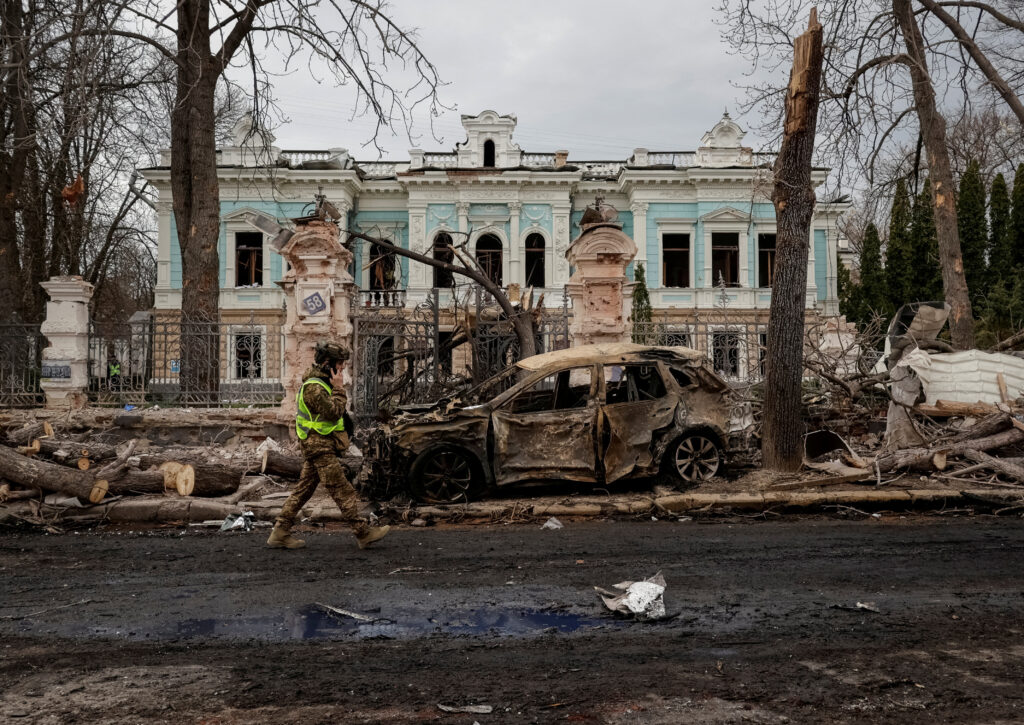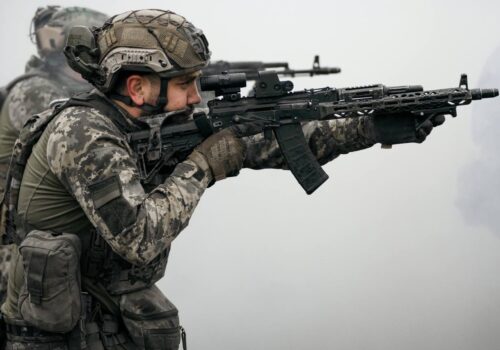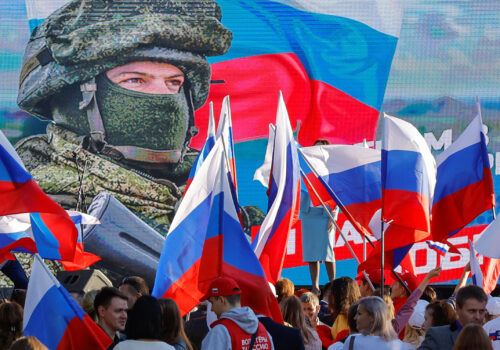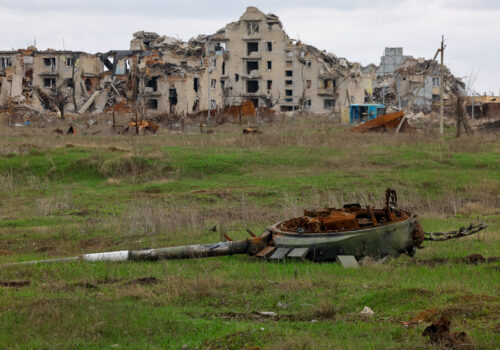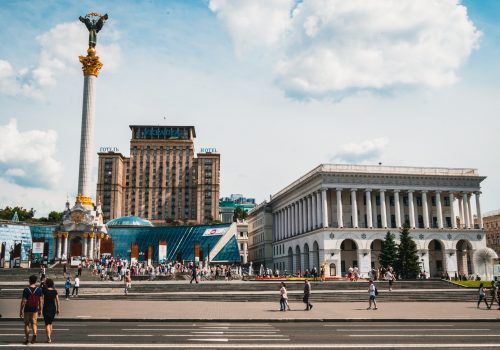As Ukrainians made their way to church on the morning of April 13 to attend Palm Sunday services, two Russian ballistic missiles struck the city center in Sumy, killing at least 35 people and wounding more than 100. This Palm Sunday bombardment was the deadliest Russian attack so far this year. It was part of an escalating recent trend of Russian airstrikes targeting Ukrainian civilians that is casting doubt over the viability of US-led peace talks initiated by President Trump.
The attack in Sumy came just over a week after a similarly devastating strike on a residential district in the southern Ukrainian city of Kryvyi Rih that killed 19 people including nine children. The missile struck close to a playground in the early evening when the area was busy with children and families. According to the UN Office of the High Commissioner for Human Rights, the attack was “the deadliest single strike harming children which the Office has verified since the start of the full-scale invasion in February 2022.”
The Russian missile strikes on Kryvyi Rih and Sumy share a number of characteristics. Both attacks targeted civilian areas of major Ukrainian cities and took place at times when large numbers of people were likely to be present. Both reportedly involved the use of cluster ammunition designed to maximize casualties. “The use of an explosive weapon with wide area effects by the Russian Federation in a densely populated area, and without any apparent military presence, demonstrates a reckless disregard for civilian life,” commented UN Human Rights Chief Volker Türk following the Kryvyi Rih attack.
Stay updated
As the world watches the Russian invasion of Ukraine unfold, UkraineAlert delivers the best Atlantic Council expert insight and analysis on Ukraine twice a week directly to your inbox.
In addition to these ballistic missile strikes on heavily populated civilian areas, Russia has also recently escalated drone attacks across Ukraine. In the month following the first meeting between Kremlin and White House officials in Saudi Arabia, the number of Russian drones targeting Ukraine surged by more than 50 percent. Analysis by Britain’s Telegraph newspaper found that Russia launched an average of 101 drones per day in the period prior to the initial February talks in Riyadh, compared to 154 afterward.
Russia’s increased bombardment of Ukraine and deadly missile attacks on Ukrainian cities are casting a long shadow over the Trump administration’s efforts to broker a peace deal and end the largest European invasion since World War II. Many view Russia’s actions as an indirect but unmistakable snub to Trump’s peacemaker efforts. Others have also suggested that Kryvyi Rih may have been selected as a target due to the city’s status as Ukrainian President Volodymyr Zelenskyy’s hometown, in order to send a chilling message of Russian impunity and underline Ukraine’s vulnerability to further such attacks.
Eurasia Center events

Trump has so far refused to criticize Russia directly for the recent spate of bombing attacks that have left dozens of Ukrainian civilians dead. Instead, he somehow concluded that the recent Palm Sunday strike in Sumy may have been a “mistake.”
Elsewhere in the US and across Europe, there has been widespread condemnation. “Putin’s Russia keeps bombing cities and murdering citizens. It is their strategy to wear down Ukraine. We shouldn’t agree to reward these war crimes with any Ukraine territory,” commented GOP Representative Don Bacon. Fellow Republican Michael McCaul said the Palm Sunday attack was “beyond the pale” and served as further confirmation that Russia has no intention of ending the war. “While Ukraine has accepted President Trump’s ceasefire proposal, Putin continues to show he is more interested in bloodshed than in peace,” stated McCaul.
Across the Atlantic, French President Emmanuel Macron responded to the Palm Sunday attack by emphasizing the “blatant disregard for human lives, international law, and the diplomatic efforts of President Trump.” Italian Prime Minister Georgia Meloni echoed Macron, condemning “this unacceptable violence, which goes against all real engagement in favor of peace.” British Prime Minister Keir Starmer slammed Russia’s “horrific attacks” and noted that while Zelenskyy had shown his commitment to peace by backing an unconditional ceasefire, “Putin must now also agree to a full and immediate ceasefire without conditions.”
Such calls are unlikely to resonate in Moscow unless the entire US approach to the peace process changes significantly. During the first few months of Trump’s peace initiative, the US has offered Russia a series of concessions, for instance the Black Sea ceasefire proposal, while very publicly applying pressure to Ukraine. So far, this appears to have hardened Putin’s conviction that he can ultimately outlast the West in Ukraine. With existing US aid commitments to Ukraine set to run out in the coming months and no indication that the Trump administration will sanction further support, it is easy to understand why Putin is in no hurry to seek peace.
While Trump remains reluctant to condemn Putin, there are indications that he may finally be growing tired of the Kremlin dictator’s stalling tactics and will soon run out of patience. Trump has recently said he is “very angry” and “pissed off” with Putin over the lack of progress toward peace, and has called on him to “get moving” toward a ceasefire agreement. If Trump is serious about getting Putin’s attention, he will need to follow through on earlier threats and increase the economic pressure on Russia via sanctions and tariffs measures against Putin’s energy industry. Anything less will be interpreted by the Kremlin as a tacit green light to continue escalating attacks on Ukraine’s civilian population as Putin seeks to break the country’s resistance.
Mercedes Sapuppo is an assistant director at the Atlantic Council’s Eurasia Center.
Further reading
The views expressed in UkraineAlert are solely those of the authors and do not necessarily reflect the views of the Atlantic Council, its staff, or its supporters.

The Eurasia Center’s mission is to enhance transatlantic cooperation in promoting stability, democratic values and prosperity in Eurasia, from Eastern Europe and Turkey in the West to the Caucasus, Russia and Central Asia in the East.
Follow us on social media
and support our work
Image: A Ukrainian serviceman walks at the site of a Russian missile strike, amid Russia's attack on Ukraine, in Sumy, Ukraine. April 13, 2025. (REUTERS/Sofiia Gatilova)
